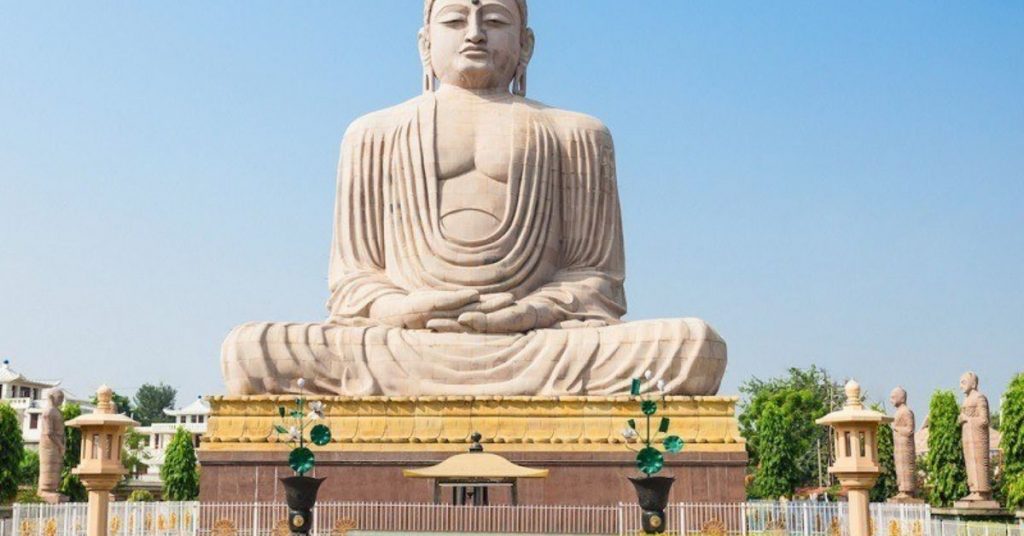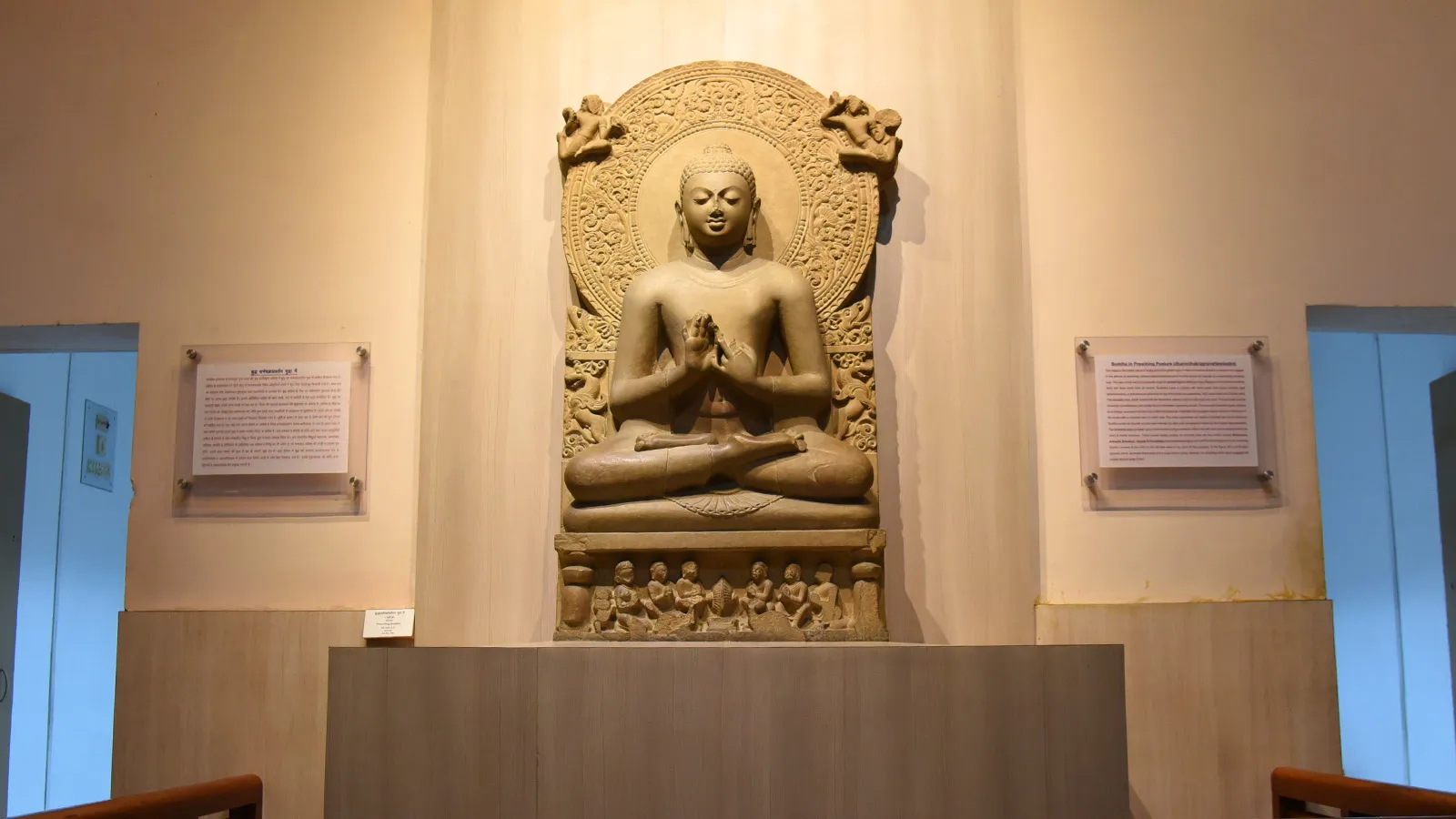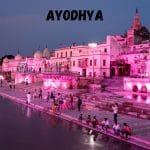Buddhist Circuit Tour in India

Buddhist Circuit Tour in India
India is not only the birthplace of Buddhism—it is the very soil where a prince became a monk, a monk became a teacher, and a teacher became a world-transforming Buddha. With relics, teachings, and sacred monuments spread across the subcontinent, India is home to the most authentic and revered Buddhist pilgrimage sites in the world.
Whether you’re a devout Buddhist, a history enthusiast, or a seeker of peace and wisdom, the Buddhist circuit tour in India offers a life-changing journey. Let Tripcosmos.co guide you through the timeless footsteps of Lord Buddha.
1. Introduction – The Spiritual Legacy of Buddhism in India
Why India is the Birthplace of Buddhism
The story of Buddhism begins in India, in the 6th century BCE, with Prince Siddhartha Gautama of the Shakya clan. His quest for truth, his meditation beneath the Bodhi Tree, and his teachings on the Four Noble Truths all happened on Indian soil.
From Lumbini in present-day Nepal to Bodhgaya, Sarnath, Kushinagar, Rajgir, and Vaishali, India is dotted with places that witnessed the key milestones of the Buddha’s life.
The Rise of Buddhist Pilgrimage Tourism
With global interest in mindfulness, wellness, and spiritual travel on the rise, India has seen a resurgence of Buddhist pilgrimage tourism. Countries like Thailand, Sri Lanka, Japan, Myanmar, Bhutan, and Vietnam send pilgrims and monks to retrace Buddha’s path.
Tripcosmos.co provides culturally sensitive, multi-lingual, and immersive Buddhist tours, creating not just a trip—but a spiritual memory.
2. What is the Buddhist Circuit Tour in India?
Definition and Historical Significance
The Buddhist Circuit Tour is a government-recognized spiritual and cultural itinerary that covers the most important places in the life of Lord Buddha. These include:
- His birth (Lumbini)
- Enlightenment (Bodhgaya)
- First sermon (Sarnath)
- Mahaparinirvana (Kushinagar)
This circuit also includes secondary sites where Buddha meditated, taught, or performed miracles, such as Rajgir, Nalanda, Shravasti, Vaishali, and Sankasya.
Importance of the Four Major Pilgrimage Sites
According to ancient texts, Buddha himself advised his followers to visit four sacred places after his death. These are:
- Lumbini – Where he was born
- Bodhgaya – Where he attained enlightenment
- Sarnath – Where he gave his first sermon
- Kushinagar – Where he attained final Nirvana
These four locations form the core of the Buddhist pilgrimage experience, and are central to every meaningful tour.
3. Bodhgaya, Bihar – The Enlightenment Site of Lord Buddha
Mahabodhi Temple and the Bodhi Tree
Bodhgaya is the heart of Buddhism. It is here that Siddhartha meditated under the Bodhi Tree and attained enlightenment, becoming the Buddha. The Mahabodhi Temple, a UNESCO World Heritage Site, marks this sacred spot.
- The current Bodhi Tree is a direct descendant of the original
- The Vajrasana (Diamond Throne) marks the exact spot of enlightenment
- Monks from around the world chant, meditate, and perform rituals here daily
Key Attractions in Bodhgaya
- International monasteries from Thailand, Japan, Tibet, Bhutan, and Vietnam
- The Great Buddha Statue, standing 80 feet tall
- Sujata Kuti, where Buddha received milk rice before enlightenment
- Dungeshwari Caves, where he practiced severe asceticism
Tripcosmos.co offers guided temple tours, meditation sessions, and storytelling walks in Bodhgaya with experienced scholars and monks.
4. Sarnath, Uttar Pradesh – The First Sermon of Buddha
Dhamek Stupa and the Ashokan Pillar
After attaining enlightenment, Buddha traveled to Sarnath, near Varanasi, where he delivered his first sermon on the Four Noble Truths and the Eightfold Path. This moment is considered the formal founding of the Buddhist Sangha (community).
- The Dhamek Stupa stands where the sermon was delivered
- The Ashokan Pillar, with its lion capital, is India’s national emblem
- Surrounding ruins reflect the grandeur of Sarnath as a learning center
Monasteries and the Sarnath Museum
- Thai, Chinese, Tibetan, and Japanese temples enrich the spiritual landscape
- Sarnath Archaeological Museum houses the original lion capital and relics
- Meditation gardens and evening chanting sessions offer peace and introspection
Tripcosmos.co connects Varanasi and Sarnath tours, offering transport, multi-lingual guides, and entry passes.
5. Kushinagar, Uttar Pradesh – The Place of Mahaparinirvana
Mahaparinirvana Temple and Ramabhar Stupa
Kushinagar is where Buddha breathed his last and attained Mahaparinirvana (final liberation from the cycle of rebirth). It is a deeply peaceful place, perfect for reflection.
- The Mahaparinirvana Temple houses a 6-meter-long reclining Buddha statue
- The Ramabhar Stupa marks the site of Buddha’s cremation
- Meditation gardens and Vipassana centers provide quietude for personal practice
Peaceful Gardens and International Monasteries
- Explore Myanmar, Thai, Sri Lankan, and Korean monasteries
- Participate in chanting and Dhamma sessions led by international monks
- Witness the Ullambana Festival or Mahaparinirvana Day with global pilgrims
Tripcosmos.co offers overnight stays, meditation retreats, and spiritual guide services in Kushinagar.
6. Lumbini, Nepal – Birthplace of Siddhartha Gautama
Maya Devi Temple and Sacred Garden
Though located in present-day Nepal, Lumbini is integral to the Buddhist circuit tour in India, as it is the birthplace of Siddhartha Gautama, who later became the Buddha.
- The Maya Devi Temple marks the exact spot where Queen Maya Devi gave birth beneath a sal tree
- Inside, you’ll find the marker stone, ancient temple remains, and a sacred pond
- Pilgrims walk barefoot around the Sacred Garden, reflecting on the Buddha’s humble origins
How to Include Lumbini in Your Indian Itinerary
Lumbini is easily accessible from Kushinagar or Gorakhpur (India) and is just across the Indo-Nepal border.
- Tripcosmos.co arranges all border formalities, transport, and visa assistance
- Combine Lumbini with Kushinagar and Shravasti for a comprehensive northern Buddhist tour
- Experience Nepalese monastery life, international temple complexes, and tranquil lodges
We offer cross-border Buddhist circuit tours, tailored for both Indian and international travelers.
7. Rajgir and Nalanda – Ancient Learning and Meditation Hubs
Vulture’s Peak and the Bamboo Grove
Rajgir, in Bihar, is where Buddha spent many rainy seasons teaching the Dharma. This serene valley surrounded by hills was once King Bimbisara’s capital.
- Vulture’s Peak (Griddhakuta) is where Buddha delivered key discourses, including the Lotus Sutra
- Visit Bamboo Grove (Veluvana), one of the earliest monasteries offered to the Sangha
- Take the ropeway to Vishwa Shanti Stupa, built by Japanese Buddhists
Tripcosmos.co organizes hiking meditation walks, Buddhist text discussions, and sunset experiences at Vulture’s Peak.
Nalanda University Ruins and Museum
Just 15 km from Rajgir lie the remains of Nalanda University, the world’s oldest residential university. It once hosted 10,000 students and 2,000 teachers, including revered monks like Xuanzang (Hiuen Tsang).
- Explore the brick monastery ruins, stupas, classrooms, and libraries
- Visit the Nalanda Archaeological Museum, housing sculptures and relics
- The Xuanzang Memorial Hall honors the Chinese traveler’s deep connection to Nalanda
Tripcosmos.co offers Rajgir–Nalanda day trips, complete with expert guides and academic insight into Buddhist scholastic traditions.
8. Shravasti, Uttar Pradesh – Buddha’s Monsoon Retreats
Jetavana Monastery and Anathapindika’s Park
Shravasti is where the Buddha spent 24 rainy seasons, making it his longest-resided location. It is home to Jetavana Monastery, gifted by the wealthy devotee Anathapindika.
- Visit the Ananda Bodhi Tree, a sapling from Bodhgaya’s Bodhi Tree
- Explore the remains of monasteries, stupas, and prayer halls
- Meditate in Anathapindika’s Park, where Buddha gave many discourses
Shravasti is lesser known but holds deep meditative peace and spiritual gravity.
Key Teachings and Miracles at Shravasti
It is believed that Buddha performed the Twin Miracle here—emitting fire and water simultaneously to silence skeptics.
- Participate in chanting circles, evening meditation, and guided text readings
- Join Tripcosmos.co’s monastic immersion stays, where you live like a monk for a day
Shravasti is a quiet retreat, perfect for deep introspection and connecting with Buddha’s wisdom.
9. Vaishali, Bihar – The First Buddhist Council and Relics
Ashokan Pillar and Stupa Complex
Vaishali is where Gautama Buddha announced his impending Mahaparinirvana, making it a place of emotional and spiritual weight.
- The Ashokan Pillar with a lion capital still stands tall, marking Buddha’s last sermon in Vaishali
- Visit the stupa complex, where Buddhist relics were once enshrined
- The site is surrounded by ancient monasteries, votive stupas, and meditation spots
Tripcosmos.co includes Vaishali in the Bihar Buddhist trail, linking it with Rajgir, Nalanda, and Bodhgaya.
Site of the First Nuns in Buddhism
Vaishali is historically significant as the location where Buddha accepted women into the Sangha, beginning the lineage of bhikkhunis (Buddhist nuns).
- The ruins here include a commemorative stupa for this event
- Our tours share this revolutionary story through narrative walks and exhibits
This makes Vaishali an important stop for gender-conscious travelers and spiritual feminists.
10. Sankasya, Uttar Pradesh – The Descent from Heaven
The Forgotten Site of Buddha’s Return from Tushita Heaven
Sankasya is where the Buddha is said to have descended from the heavenly realm of Tushita, after teaching his mother the Abhidhamma. It is one of the eight great Buddhist pilgrimage sites, though often overlooked.
- A mound marks the exact descent spot, once topped by Ashokan structures
- A Buddha temple and statue now mark the spiritual site
Tripcosmos.co helps revive this location with historical context, storytelling, and silent meditative visits.
Ancient Monuments and Historical Value
- Discover the remains of stupas and Ashokan relics
- Interact with local monks and volunteers maintaining the site
- Best visited with a Shravasti–Sankasya combo tour
While less developed, Sankasya holds profound symbolism in the Buddhist cosmology and deserves a place on your itinerary.
11. Buddhist Sites in Central and South India
Andhra Pradesh: Amaravati and Nagarjunakonda
Andhra Pradesh holds a prominent place in Buddhist history, particularly during the Satavahana and Ikshvaku dynasties.
- Amaravati: Known for its grand Amaravati Stupa, once larger than Sanchi, adorned with exquisite sculptures depicting Jataka tales
- Nagarjunakonda: Named after the philosopher Nagarjuna, this river island once had 30+ monasteries, chaityas, and inscriptions
Today, visitors can explore museum ruins, relic halls, and reconstructed stupa models, with Tripcosmos.co providing heritage interpreters and local transport.
Maharashtra: Ajanta, Ellora, and Deekshabhoomi
- Ajanta Caves: 29 rock-cut caves decorated with Buddhist murals and sculptures, dating back to the 2nd century BCE
- Ellora Caves: A stunning mix of Buddhist, Hindu, and Jain art, including cave 10 (chaitya) and cave 12 (monastery)
- Deekshabhoomi, Nagpur: A major modern pilgrimage site where Dr. B.R. Ambedkar embraced Buddhism, marking a spiritual revolution for Dalits
Tripcosmos.co offers art historian-led tours and Ambedkar Buddhist heritage packages in Maharashtra.
12. Buddhist Monasteries and Cultural Experience
International Monasteries in India
India’s Buddhist sites today are enriched by global spiritual architecture, with countries building monasteries to honor the Buddha.
- Thai Temple in Sarnath
- Tibetan Monasteries in Bodhgaya and Dehradun
- Japanese Temple with Peace Bell in Rajgir
- Sri Lankan Viharas in Kushinagar and Nalanda
These monasteries provide a glimpse into how different cultures interpret the teachings of Buddha, making your pilgrimage truly global.
Meditation Retreats and Monastic Living
Want to live like a monk for a few days? Many monasteries and centers offer:
- Vipassana courses in Bodhgaya, Dharamshala, and Igatpuri
- Mindfulness and loving-kindness (metta) meditation retreats
- Opportunities to volunteer in temples, kitchen service (seva), or teach English to monks
Tripcosmos.co facilitates authentic monastery stays and meditation packages, with translation help and spiritual orientation.
13. Planning Your Buddhist Circuit Tour with Tripcosmos.co
Ideal Itineraries and Transport Options
Our Buddhist circuit tours are crafted based on available time, interests, physical capability, and spiritual goals. Popular itineraries include:
- Core Buddhist Circuit (7–9 days): Bodhgaya, Sarnath, Kushinagar, Lumbini
- Extended Tour (12–15 days): Adds Rajgir, Nalanda, Shravasti, Vaishali, Sankasya
- South & Heritage Combo (5–7 days): Ajanta, Ellora, Deekshabhoomi, Amaravati
- Ambedkarite Pilgrimage Route
We offer private cars, AC coaches, train bookings, and air packages, with multilingual guides and seamless logistics.
Guides, Language Support, and Cultural Immersion
- Our guides speak English, Hindi, Thai, Sinhalese, Tibetan, and Japanese
- All-inclusive tour packages with stays, meals, entry passes, and donations
- Cultural activities like chanting, local rituals, monk interactions, and storytelling sessions
Tripcosmos.co brings authentic Buddhist pilgrimage to life with compassion, knowledge, and cultural care.
14. Best Time to Take a Buddhist Pilgrimage in India
Weather and Festival Calendar
- October to March: Best weather for travel and outdoor temple visits
- April to June: Warmer, but ideal for hill-region monasteries
- Monsoon (July–September): Ideal for Shravasti, Rajgir, and practicing Buddha’s Rain Retreat concept
Buddha Purnima and International Events
- Buddha Purnima (April/May): Celebrated at Bodhgaya, Sarnath, Kushinagar with grand processions, teachings, and chanting
- Kathina Ceremony (October): Robe-offering to monks
- International Buddhist Conventions and Cultural Events are also held seasonally
Tripcosmos.co schedules festival-specific tours, so you can align your journey with spiritually charged dates.
15. Conclusion – Following the Footsteps of the Enlightened One
A Buddhist circuit tour in India is not just a visit to ancient ruins or temples—it is a profound spiritual experience. From the quietude of Bodhgaya to the wisdom echoing in Nalanda’s ruins, from the serenity of Shravasti to the compassion felt in Kushinagar, every step is a path toward peace and insight.
Whether you’re seeking historical understanding, meditative clarity, or cultural immersion, Tripcosmos.co offers more than a tour—it offers a journey to the heart of Buddha’s teachings.
Travel with us and discover how 2,500-year-old wisdom still breathes through India’s sacred soil.
FAQs
1. How many days does a Buddhist circuit tour in India require?
You’ll need 7 to 15 days, depending on whether you cover just the core sites or the full extended circuit.
2. Is it possible to cover all sites in one trip?
Yes. Tripcosmos.co offers complete circuit packages, including Lumbini with visa support and cross-border transport.
3. Are there guided tours in different languages?
Absolutely. We offer English, Thai, Japanese, Tibetan, Sinhalese, and Hindi-speaking guides.
4. Do I need a visa to visit Lumbini from India?
Yes, but Indian citizens can travel freely. International travelers need a Nepal visa, which Tripcosmos.co assists with.
5. What is the best time to plan this journey?
October to March is ideal. For festival energy, visit during Buddha Purnima (April/May).






Thanks for sharing this perspective. I’ve been diving into mindful gaming lately, and ZenGamer.net has been a solid resource for strategies to keep gaming stress‑free.